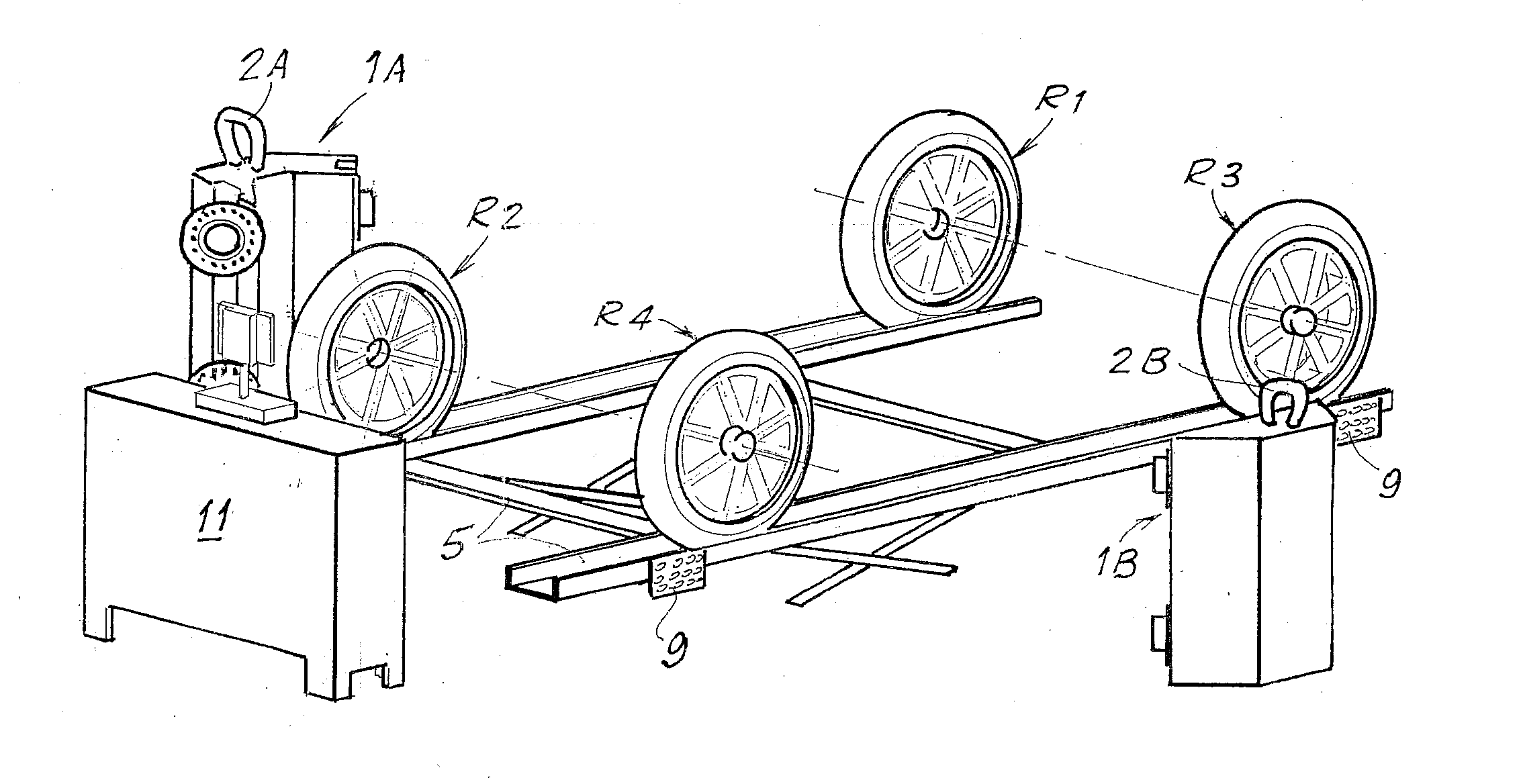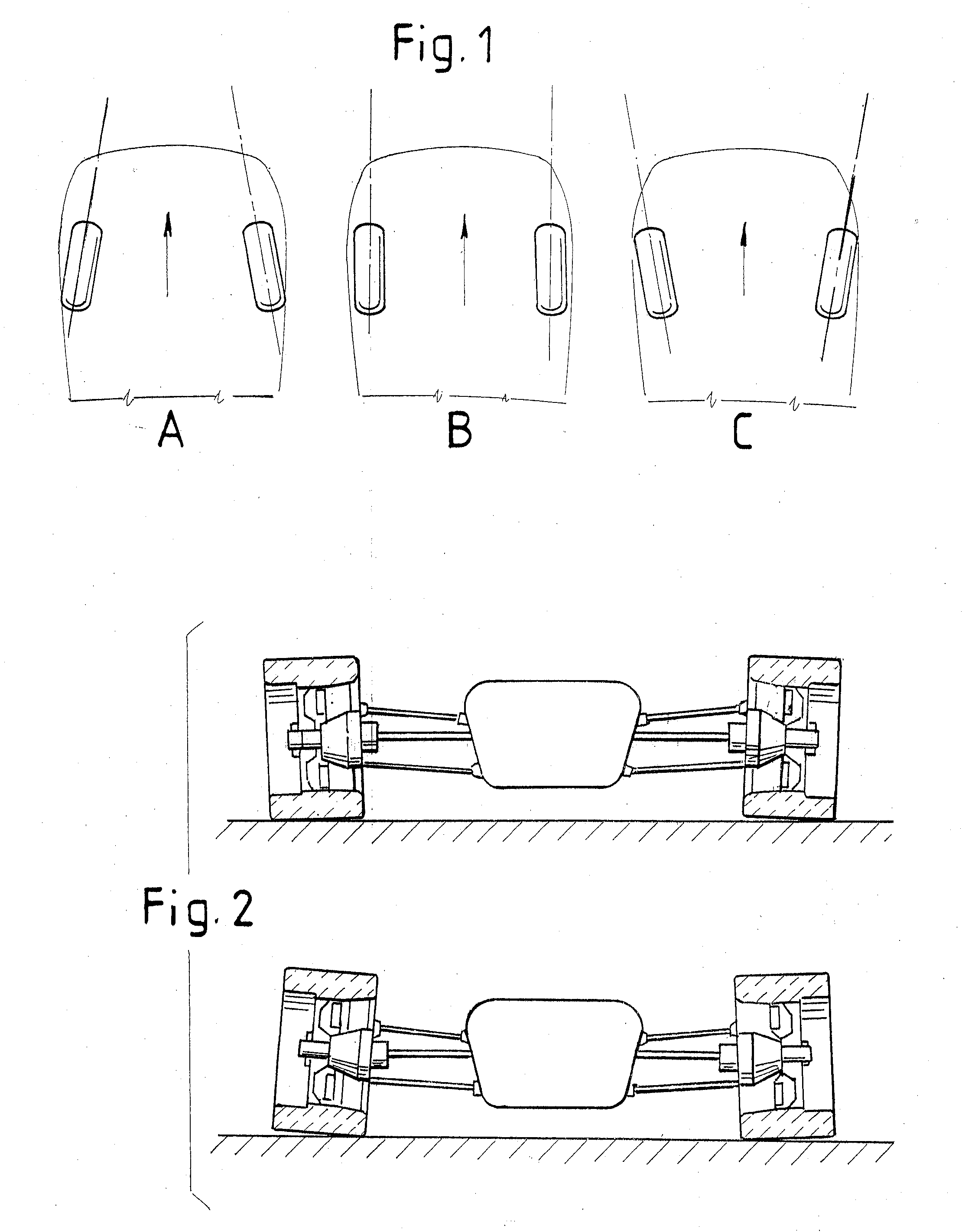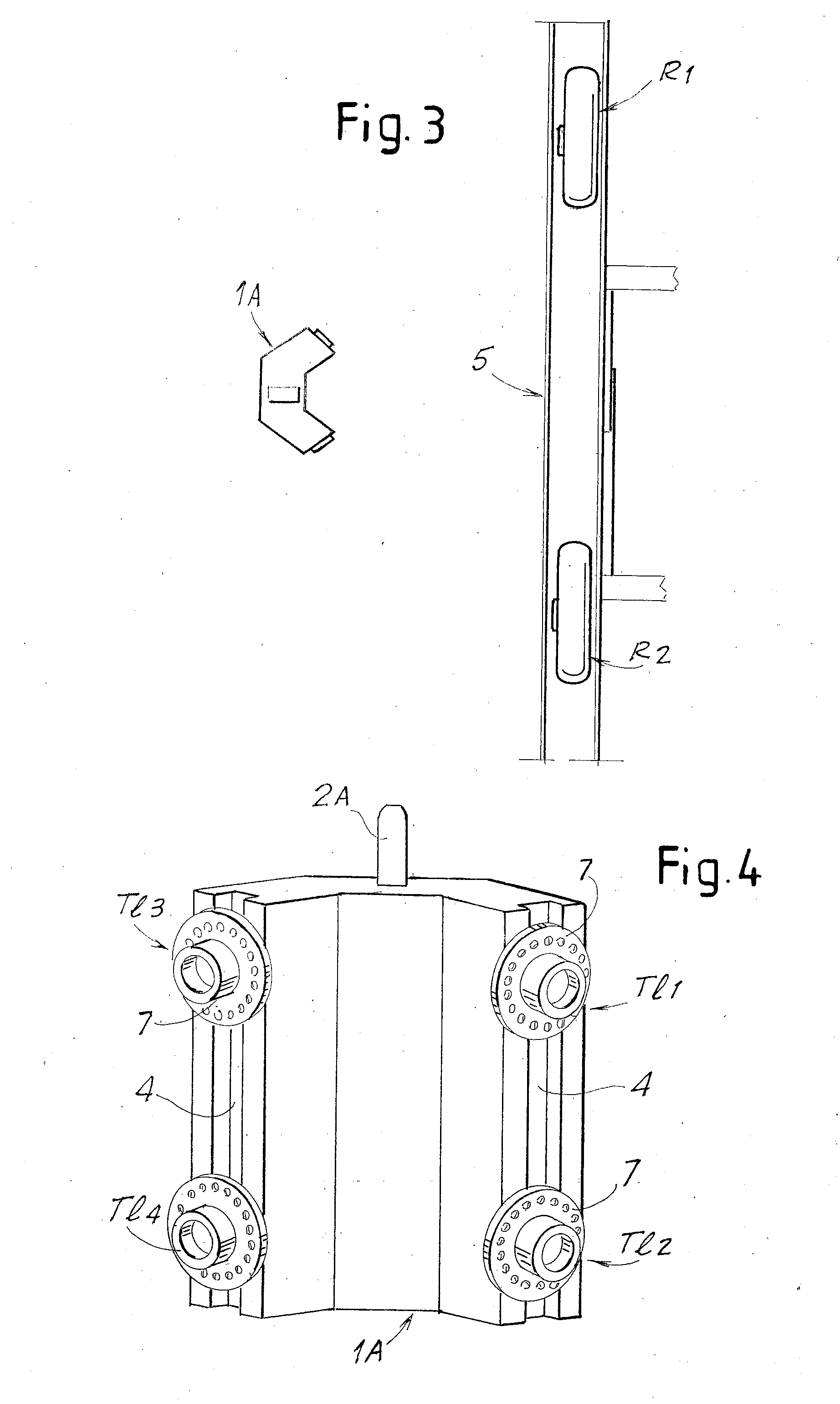Method and device for non-contact measurement of the alignment of motor vehicle wheels
a technology for motor vehicles and wheels, applied in measurement devices, instruments, using electrical means, etc., can solve the problems of large measurement error, inconvenient use, and inconvenient us
- Summary
- Abstract
- Description
- Claims
- Application Information
AI Technical Summary
Benefits of technology
Problems solved by technology
Method used
Image
Examples
Embodiment Construction
Description of the Components of the Measurement System
[0064]With reference to FIGS. 3 to 5, the components of the measurement device will initially be described, limited to what is necessary to understand the present invention. Subsequently, there will be described the operating principle and the method to determine the toe and camber angles using the device illustrated.
[0065]In an advantageous embodiment, the system comprises an acquisition column for each side of the vehicle. The columns are indicated with 1A and 1B in the diagram in FIGS. 3-5. Preferable, four video cameras, for example CCD or CMOS cameras, are mounted in each column 1A, 1B. In the diagram the video cameras are indicated with TI1, TI2, TI3, TI4 for the column 1A and TI5, TI6, TI7, TI8 for the column 1B. They can be movable, for example along guides 4 integrated in the column 1A, 1B, and tiltable. In an alternative embodiment the video cameras are fixed with respect to the columns on which they are mounted. As wi...
PUM
 Login to View More
Login to View More Abstract
Description
Claims
Application Information
 Login to View More
Login to View More - R&D
- Intellectual Property
- Life Sciences
- Materials
- Tech Scout
- Unparalleled Data Quality
- Higher Quality Content
- 60% Fewer Hallucinations
Browse by: Latest US Patents, China's latest patents, Technical Efficacy Thesaurus, Application Domain, Technology Topic, Popular Technical Reports.
© 2025 PatSnap. All rights reserved.Legal|Privacy policy|Modern Slavery Act Transparency Statement|Sitemap|About US| Contact US: help@patsnap.com



